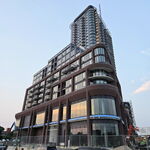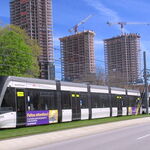^ not trying to defend Metrolinx here but I wonder if this passage gives rise to some constructive improvements. Like maybe a priority message to a train operating crew can override an automated hot box detector message?
There is nothing fail-safe in this.... the crew may have been distracted and failed to switch over exactly on time, or inadvertently chose the wrong channel, or the channel is in use when they switch over so they disregard any conversation on the new channel for a bit. The RTC has a choice of continuing to hail the train on the "correct" channel in hopes they respond, or try hailing them on the old (or some other) channel until contact is made. There is an element of patience to all this as it regularly takes several tries (or several minutes) to make contact.
Indeed this is a fairly complicated scenario, for starters there's two different rail authorities. There's the RTC who's job is to direct the movement of all trains on a subdivision(s), meaning their focus is not just GO trains. And there's MX Rail Operations who gives operational instructions solely to GO trains. Transportation Safety officers, TSO for short, are MX employees and interface with Rail Ops. Transmissions from rail ops are done over a UHF radio which doesn't interfere with VHF transmissions and both can transmit at the same time. But try listening to and holding two conversations at once, things can easily be missed. Also all transmissions coming from the UHF(rail ops) will take a backseat to HBD broadcasts. Crews are expected to direct their
full attention towards the HBD while the entire train is going over one. It doesn't help that the engines are loud and crews can be performing multiple tasks at once. For example in that particular location the engineer would also be expected to initiate his brake application for Burlington station or to start it shortly thereafter. Tragic as the loss of life from someone walking along the tracks may be the fact remains that they
should not have been there in the first place. Hot box detectors meanwhile broadcast vital information about potential failures which if ignored could lead to catastrophic consequences up to and including the derailment of a train which could lead to a huge number of fatalities of the completely innocent people on board. It's simply a matter of priorty, their lives obviously take precedent over that of any trespasser.
If a problem is detected the HBD will almost immediately make an open broadcast on the standby channel in regards to the problem. If no problem is detected the HBD will still make an open broadcast but only after the entire train has passed over the detector(usually delayed by a few seconds after the final coach passes over it). Basically the entire time a train is going over an HBD the crews will be keenly focused on listening for any alarms broadcast from it on the VHF. Any broadcast coming from the UHF made during that time will only be responded to after the HBD broadcast is made. The HBD broadcast also overrides all other VHF radio communications while it is being transmitted, at least in the area in question. Because of its importance, radio transmissions from it are strong enough to overpower any and all others made in the area. So if the RTC was trying to contact the train as it was getting an HBD reading his transmission would have been overpowered by it. And even if he called them just before they got their broadcast the crew would not respond back to him right away until after they receive their HBD reading because they could inadvertently transmit over their own HBD broadcast as you cannot broadcast and receive a transmission on the radio at the exact same time. For the entire time you press down on the receiver no transmissions can be heard(other trains in the area will hear the most powerful broadcast source). Obviously this is done to avoid confusion, last thing you need is to have another transmission going off when your in the middle of trying to have a conversation. For the record RTC's do not know exactly when a train is going over an HBD, they only know that a train is somewhere inside the same block. So you always wait until you get your reading first and then only after receiving a good reading do you respond back to anyone calling you on the VHF OR the UHF. Besides it's not like it takes up a huge amount of time, a train going 60-odd mph which GO trains should be traveling at that point, would only need to dedicate about 20 seconds to the entire task. But unfortunately that could make the difference between stopping in time for a trespasser ahead or not.
Further away from the location of a HBD, broadcasts from it can still be heard but can be overpower by other closer sources of radio transmissions but only in those areas far enough away from HBD's. Every train that goes over an active HBD must receive a broadcast from it. If an HBD reading is missed the train must immediately slow down to a set speed(35mph) and contact the RTC to ascertain their reading. The RTC can usually look up HBD readings but if they can't for whatever reason the train that missed its reading will either be require to stop and perform and inspection of the entire train - the preferred option, or they can proceed to the next HBD at the reduced speed - the not preferred considering how far apart they usually are, about 20 or so miles. Phew, explaining all that was a mouthful.
The HBD between Aldershot and Burlington is quite simply in a bad location for GO trains. The MX portion of the Oakville sub starts just east of that HBD which has a different stb channel - stb channel of the CN owned and controlled portion of the Oakville sub. Normally trains are suppose to switch over to a new stb channel just before or precisely when they enter that territory. There is some leeway, but trains should not be on a different stb channel once they've entered into the new territory. Unfortunately GO trains have to stay on the CN stb channel even after entering into the MX controled territory to wait for that particular detector to broadcast its reading. Thing is, it's CN's detector. They have no problems with it being where it is and they certainly don't give a **** about whatever problems it may cause for GO trains.
Edited for language 



